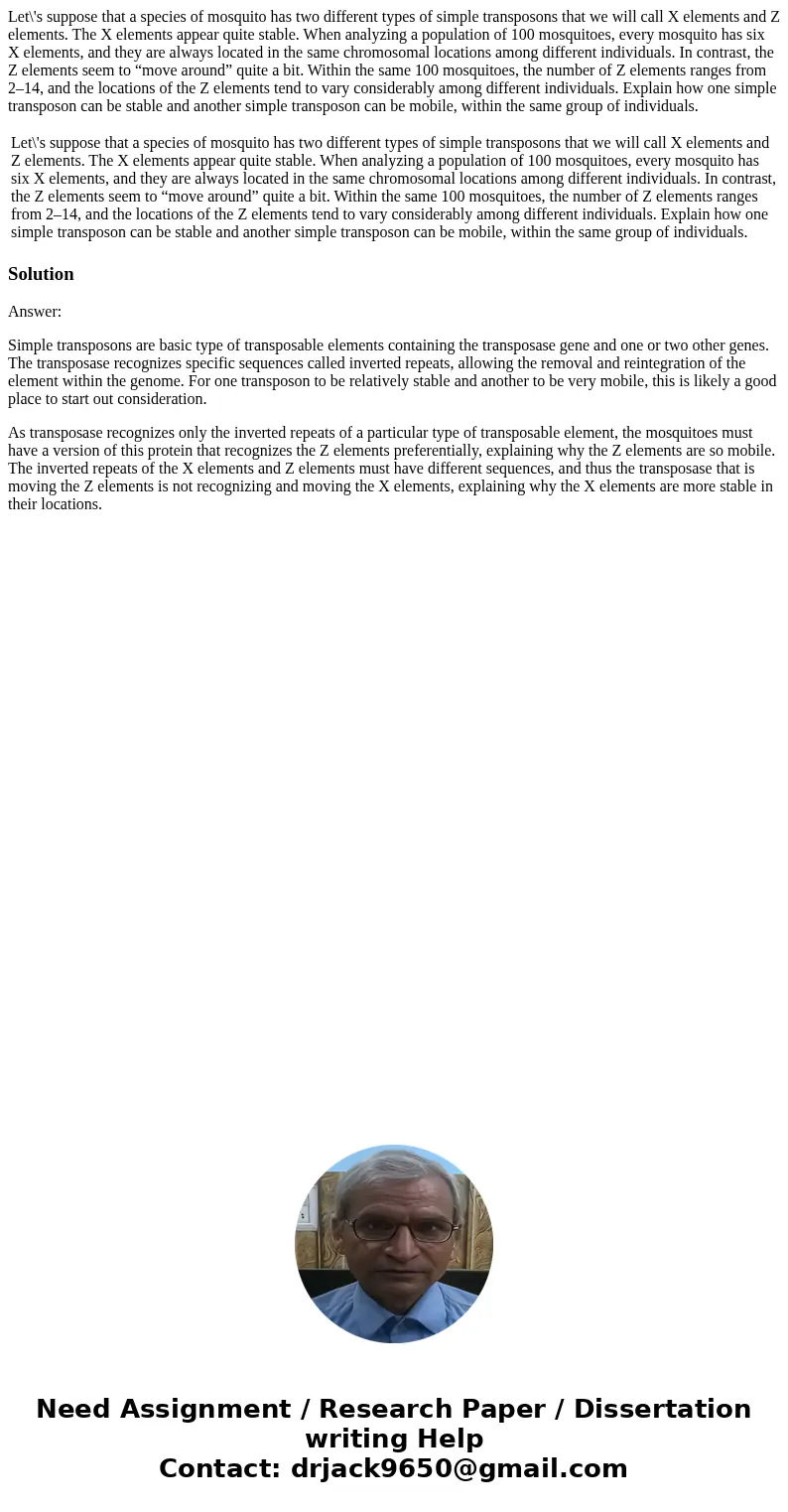Lets suppose that a species of mosquito has two different ty
Let\'s suppose that a species of mosquito has two different types of simple transposons that we will call X elements and Z elements. The X elements appear quite stable. When analyzing a population of 100 mosquitoes, every mosquito has six X elements, and they are always located in the same chromosomal locations among different individuals. In contrast, the Z elements seem to “move around” quite a bit. Within the same 100 mosquitoes, the number of Z elements ranges from 2–14, and the locations of the Z elements tend to vary considerably among different individuals. Explain how one simple transposon can be stable and another simple transposon can be mobile, within the same group of individuals.
| Let\'s suppose that a species of mosquito has two different types of simple transposons that we will call X elements and Z elements. The X elements appear quite stable. When analyzing a population of 100 mosquitoes, every mosquito has six X elements, and they are always located in the same chromosomal locations among different individuals. In contrast, the Z elements seem to “move around” quite a bit. Within the same 100 mosquitoes, the number of Z elements ranges from 2–14, and the locations of the Z elements tend to vary considerably among different individuals. Explain how one simple transposon can be stable and another simple transposon can be mobile, within the same group of individuals. |
Solution
Answer:
Simple transposons are basic type of transposable elements containing the transposase gene and one or two other genes. The transposase recognizes specific sequences called inverted repeats, allowing the removal and reintegration of the element within the genome. For one transposon to be relatively stable and another to be very mobile, this is likely a good place to start out consideration.
As transposase recognizes only the inverted repeats of a particular type of transposable element, the mosquitoes must have a version of this protein that recognizes the Z elements preferentially, explaining why the Z elements are so mobile. The inverted repeats of the X elements and Z elements must have different sequences, and thus the transposase that is moving the Z elements is not recognizing and moving the X elements, explaining why the X elements are more stable in their locations.

 Homework Sourse
Homework Sourse